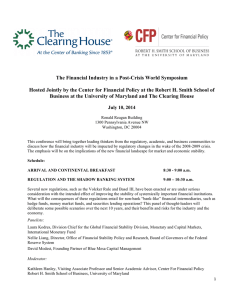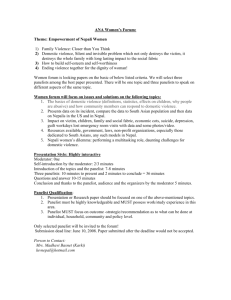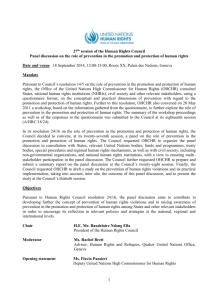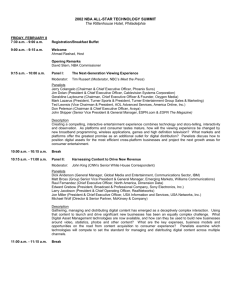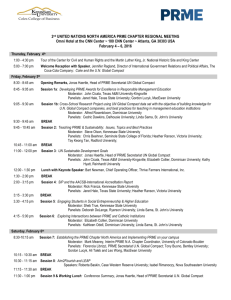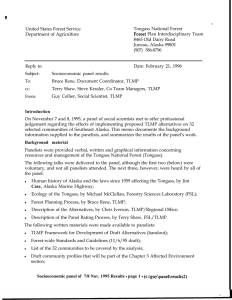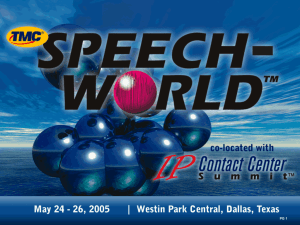STRUCTURING A PANEL PRESENTATION A panel
advertisement
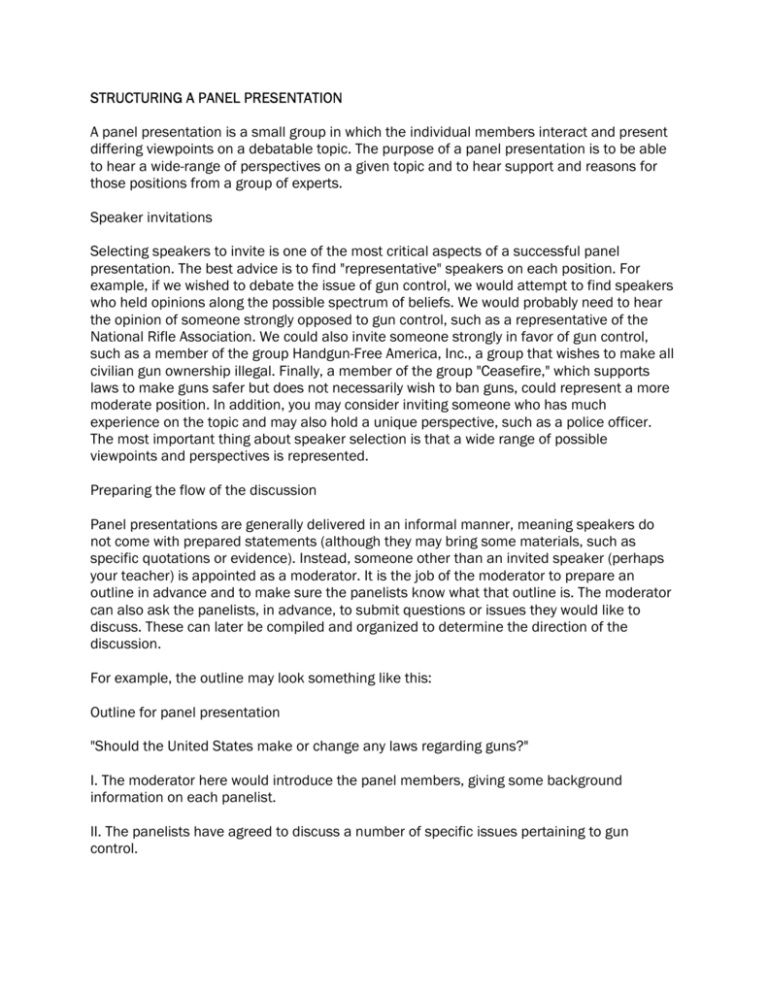
STRUCTURING A PANEL PRESENTATION A panel presentation is a small group in which the individual members interact and present differing viewpoints on a debatable topic. The purpose of a panel presentation is to be able to hear a wide-range of perspectives on a given topic and to hear support and reasons for those positions from a group of experts. Speaker invitations Selecting speakers to invite is one of the most critical aspects of a successful panel presentation. The best advice is to find "representative" speakers on each position. For example, if we wished to debate the issue of gun control, we would attempt to find speakers who held opinions along the possible spectrum of beliefs. We would probably need to hear the opinion of someone strongly opposed to gun control, such as a representative of the National Rifle Association. We could also invite someone strongly in favor of gun control, such as a member of the group Handgun-Free America, Inc., a group that wishes to make all civilian gun ownership illegal. Finally, a member of the group "Ceasefire," which supports laws to make guns safer but does not necessarily wish to ban guns, could represent a more moderate position. In addition, you may consider inviting someone who has much experience on the topic and may also hold a unique perspective, such as a police officer. The most important thing about speaker selection is that a wide range of possible viewpoints and perspectives is represented. Preparing the flow of the discussion Panel presentations are generally delivered in an informal manner, meaning speakers do not come with prepared statements (although they may bring some materials, such as specific quotations or evidence). Instead, someone other than an invited speaker (perhaps your teacher) is appointed as a moderator. It is the job of the moderator to prepare an outline in advance and to make sure the panelists know what that outline is. The moderator can also ask the panelists, in advance, to submit questions or issues they would like to discuss. These can later be compiled and organized to determine the direction of the discussion. For example, the outline may look something like this: Outline for panel presentation "Should the United States make or change any laws regarding guns?" I. The moderator here would introduce the panel members, giving some background information on each panelist. II. The panelists have agreed to discuss a number of specific issues pertaining to gun control. A. What is the purpose and nature of the second amendment? Is it still a necessary part of the constitution? B. Is a gun an effective means of self-defense? Do guns deter crimes such as burglary? C. What types of guns, if any, should be restricted? D. What would be the effects of greater restriction of guns? III. Each panelist should give a brief position statement, in order, on each of the above questions. Following each position statement, the panelists will informally question and debate with one another. IV. After one-hour (or other determined time) the audience can ask questions. Physical setting The physical setting is critical to a successful panel presentation. Most importantly, all discussants should be able to see each other and the audience at all times. Seat the panelists in a semi-circle in front of the audience. The moderator should be seated either on one end of the panelists, or in the middle of the panelists. Put a table in front of the panelists, so they may use and refer to any notes and materials they brought with them. Two rectangular tables put into a "V" shape can work well. Presentation The moderator should first provide an overview of the topic that will be debated. Then the moderator should introduce each speaker. Following the basic idea behind the outline above, the moderator should make certain that the presentation flows in an orderly manner. The most important aspect is to ensure that each panelist is given an equal and fair amount of time. Sometimes a panelist can attempt to become too dominant and to take more than his or her share of allotted time. Special thanks to Jody Roy, Ph.D. for providing these materials to SAVE.

